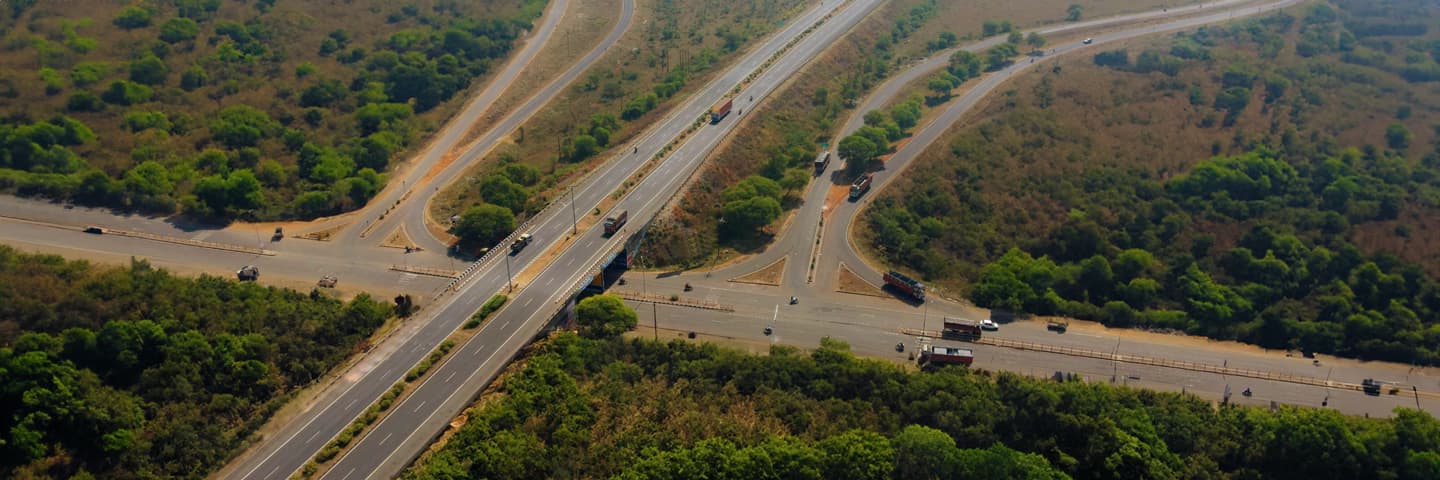Number of Lanes
4
Distance
27.73 Km
Original Concession Period
20 Years

Nagpur Seoni Expressway, a pivotal project under the Public Private Partnership model in the National Highways sector, exemplifies a four-lane divided carriageway, enhancing the North-South corridor in Seoni District, Madhya Pradesh. It covers a length of 27.73 km, contributing to National Highway No. 44 (Old NH-7) from Varanasi to Kanyakumari. The project, following a concession period of 20 years with a fixed income of bi-annual annuity, commenced operations May 25, 2010. This infrastructure endeavour symbolizes a commendable collaboration between the public and private sectors, fostering regional connectivity and economic growth.
Benefits of the Project Road
Enhanced Connectivity: The Nagpur Seoni Expressway stands as a transformative force, significantly improving connectivity by seamlessly linking previously remote areas to major urban centres. This development fosters the efficient movement of goods, services, and people, serving as a lifeline for regional integration.
Improved Safety: The project prioritizes safety with the integration of advanced features. State-of-the-art signage, enhanced lighting, and wider lanes work in unison to reduce accidents and elevate overall road safety standards. This commitment ensures a secure and reliable journey for all road users.
Reduced Travel Times: Modernization efforts on the expressway bring about a remarkable reduction in travel times. Both daily commuters and long-distance transportation benefit from the efficiency gains, leading to a substantial decrease in fuel consumption. This time-saving aspect enhances the overall appeal and functionality of the expressway.
Economic Growth: Beyond its role in transportation, the upgraded Nagpur Seoni Expressway catalyzes economic growth. Drawing in investments makes the region more accessible for businesses. This strategic development has a ripple effect, leading to job creation and a broadening of economic opportunities for local communities.
Impact on Road Users
Commuters: The Nagpur Seoni Expressway brings about a positive transformation for daily commuters, offering shorter travel times and heightened safety. This not only enhances the efficiency of their daily journeys but also contributes to an overall improvement in their quality of life.
Truck Drivers: Long-haul truck drivers experience tangible benefits from the expressway, including reduced transit times and lower operating costs. This results in a notable boost to the efficiency of the logistics industry, contributing to smoother transportation of goods.
Tourists: The improved conditions of the expressway make the Nagpur-Seoni region more attractive to tourists. This enhancement stimulates local tourism and provides a significant boon to hospitality businesses in the area.
Impact on Communities
Economic Development: The Nagpur Seoni Expressway has been a catalyst for economic growth in local communities. This surge in economic activity includes the establishment of new businesses, growth in manufacturing, and the flourishing of tourism-related ventures.
Employment Opportunities: The project has significantly contributed to job creation for residents. Opportunities span across construction, maintenance, and associated works, including toll operations, providing a boost to local employment.
Infrastructure Development: The expressway project has played a pivotal role in spurring the development of ancillary infrastructure. This encompasses the establishment of hotels, restaurants, and service stations, ultimately benefiting local entrepreneurs.
Environmental Impact: Demonstrating a commitment to environmental preservation, the project has implemented measures for ecological sustainability. Notably, a substantial number of trees have been planted along the expressway corridor, contributing to environmental well-being.
Accolades
The project has been certified under six ISO certification categories:
- ISO 9001:2015 Quality Management System
- ISO 14001:2015 Environmental Management System
- ISO 39001:2012 Road Traffic Safety Management System
- ISO 45001:2018 Occupational Health and Safety Management System
- ISO 31000:2018 Risk Management
- ISO 27001:2022 Information Security and Management System
Nagpur - Seoni Express Way Private Limited (NSEWPL)
CIN: U45203TN2007PTC164454

